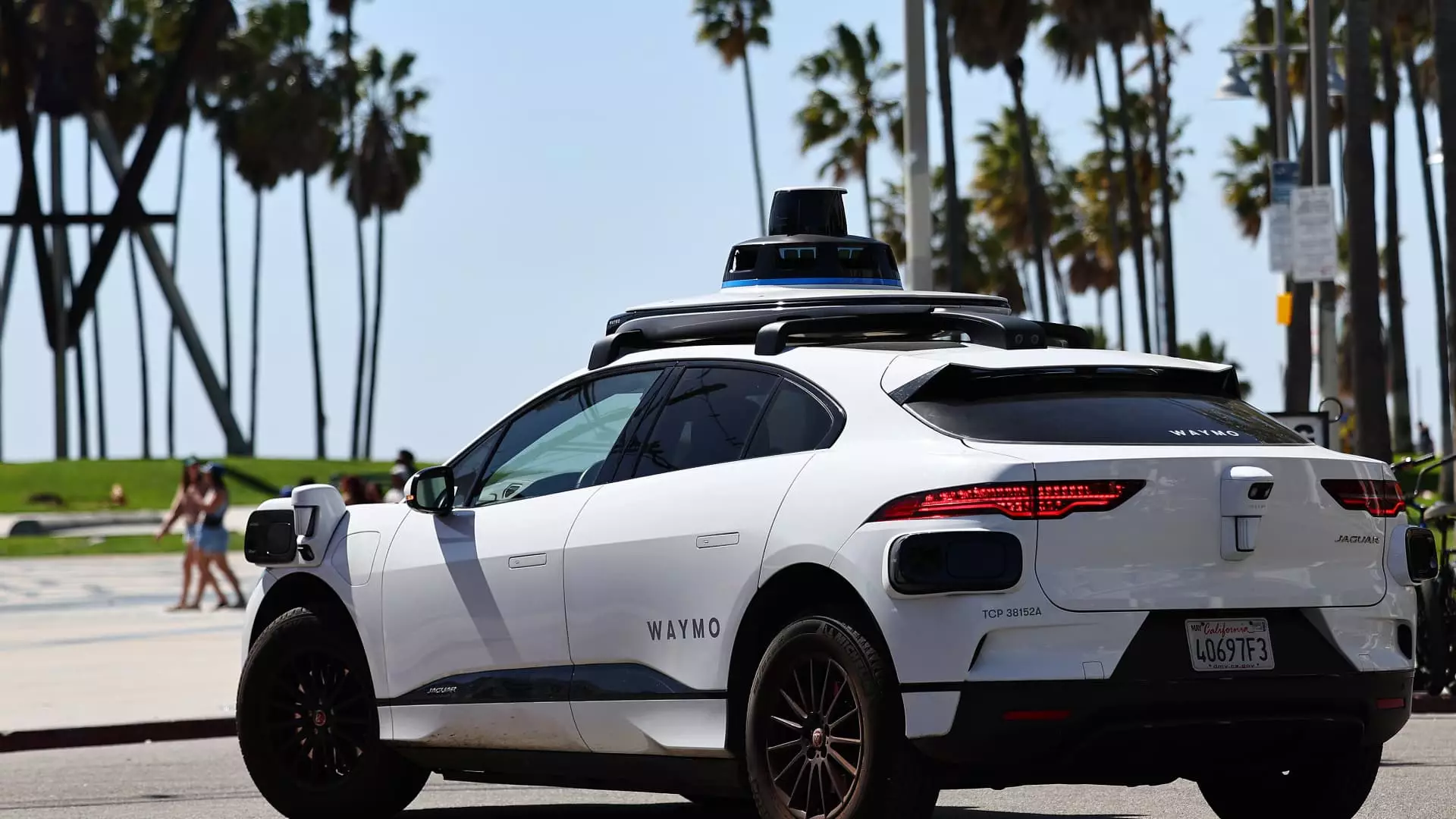Waymo, the renowned autonomous vehicle division under Alphabet Inc., recently attracted significant attention by closing a massive funding round of $5.6 billion. This injection of capital is not merely numerical; it is a pivotal step in catalyzing the company’s plans to broaden its robotaxi services beyond its current operational territories of Los Angeles, San Francisco, and Phoenix. As self-driving technology continues to mature, Waymo is well-positioned to enhance its service offerings and deepen its market penetration.
The latest Series C funding will align Waymo’s future trajectory with its ambitious goals for service expansion and technological enhancement of the Waymo Driver for commercial applications. Co-CEOs Tekedra Mawakana and Dmitri Dolgov expressed that the funding would attract more riders into the Waymo One ride-hailing service in its existing markets while also launching in others like Austin and Atlanta, thanks to a budding partnership with Uber. All of this raises an essential question: how will Waymo navigate the competitive landscape of autonomous mobility with such a sizable financial backing?
With the Series C funding, Waymo’s total capital raised surpasses a staggering $11 billion. The latest round saw participation from prominent investors such as Andreessen Horowitz, Fidelity, and Tiger Global, among others. Alphabet’s commitment to invest up to $5 billion over multiple years underscores a resounding belief in the growth potential of autonomous vehicle technology.
Waymo’s commercial robotaxi service is making strides where other competitors are still testing waters. While numerous companies are trialing autonomous vehicles, Waymo stands out for being the sole operator with a commercial service in key metropolitan areas. This not only solidifies its standing in the market but also presents significant opportunities for user adoption.
Safety has emerged as a cornerstone of Waymo’s services, attracting specific demographics such as women who express concerns about the safety of human drivers. The appeal of robotaxis has also reached parents who want a secure method for their children’s transportation. Currently, Waymo is performing over 100,000 trips weekly, emphasizing its operational capacity and reliability for users.
Despite its successes, Waymo remains aware of the challenges that come with its pioneering venture. Public perception of autonomous vehicles is still fraught with skepticism, as evidenced by a Pew Research Center survey indicating that nearly two-thirds of respondents would hesitate to use driverless vehicles. This statistic points to a crucial barrier that Waymo, and indeed the entire autonomous vehicle industry, must overcome.
Safety concerns continue to loom large. Incidents involving autonomous vehicles, including moments where Waymo’s own cars have caused minor traffic disruptions, underscore a critical need for ongoing improvements in software safety measures. Though statistical data suggests that Waymo’s vehicles experience fewer accidents than human drivers, the public’s willingness to embrace the technology hangs in the balance, weighed against these real-world incidents.
The competition in the autonomous vehicle sector is intensifying, with notable rival GM’s Cruise being a recent noteworthy player to encounter setbacks in its operations. Following a concerning incident in San Francisco, where a pedestrian was dragged during an accident involving a Cruise vehicle, the operational landscape shifted dramatically. The pause in operations for Cruise may open doors for Waymo to capitalize on its established service and regain ground in a highly dynamic market.
Tesla, another heavyweight in the vehicle technology space, is gearing up to enter the ring with its own driverless ride-hailing service. Amidst promises of fully autonomous capabilities, Tesla’s approach to the market introduces both competition and varied consumer expectations. For Waymo, understanding the shifting dynamics and carefully navigating its strategies will be essential to reclaiming and expanding its market share.
Looking forward, the future of Waymo’s operations seems increasingly promising. The recent addition of the Geely Zeekr robotaxi equipped with advanced AI sensors exemplifies Waymo’s commitment to integrating cutting-edge technologies into its service. Furthermore, a strategic partnership with Hyundai is expected to bolster its electric vehicle fleet, signaling a pivot towards sustainable transportation solutions.
Expansion plans also include testing driverless vehicles in various climates, aiming to offer services beyond temperate regions, which opens up avenues for broader applications. The question remains as to how effectively Waymo can address safety concerns while meeting the growing demand for autonomous solutions.
Ultimately, Waymo’s ambitious goals, coupled with a significant financial boost, set the stage for what could become a transformative journey in the landscape of autonomous mobility. Armed with cutting-edge technology, a clear vision for expansion, and strategic partnerships, Waymo is not just participating in the future of transport; it aspires to lead it. As the company continues to forge ahead, its progress will be a barometer for the acceptance and advancement of the autonomous vehicle industry as a whole.

